Natural disasters can devastate entire regions, and warehouses containing industrial racking are, unfortunately, not exempt. The high winds generated by tornadoes or hurricanes can twist and push racking, causing stored products to fall. Tsunamis and floods carry water, damaging the products being held and the warehouse structure. Earthquakes can cause vibrations in the ground that the racks rest on, which could lead to a collapse.
Even the tamer effects of weather and climate can be detrimental to the longevity of your racking systems. Snow and rain can lead to steel corrosion and harm the wooden pallets that carry stock. Read our blog to discover the types of damage caused by these different phenomena and how to mitigate their effects.
1. Tornadoes and Hurricanes
The high winds associated with tornadoes and hurricanes can damage pallet racks quite a bit. Of course, these natural disasters are more likely to affect racking outdoors, but pallet racks inside are certainly not exempt. The high intensity of winds associated with these storms can cause the roof or walls of a building to be blown away, exposing the pallet racks within.
First, the systems will be pushed by the wind causing them to sway. Proper anchorage on upright columns is necessary to counteract the increased overturning forces and minimize the sway. If the movement is too large, pallets may shift, and loads may fall.
The wind forces are sometimes so great that they can permanently bend racking out of position. Standards limit the acceptable amount of leaning (or out of plumb) to 0.5 inches per 10 feet [1], meaning that the winds could create ongoing issues that require repairs. The following figures present an example of systems affected by a tornado.
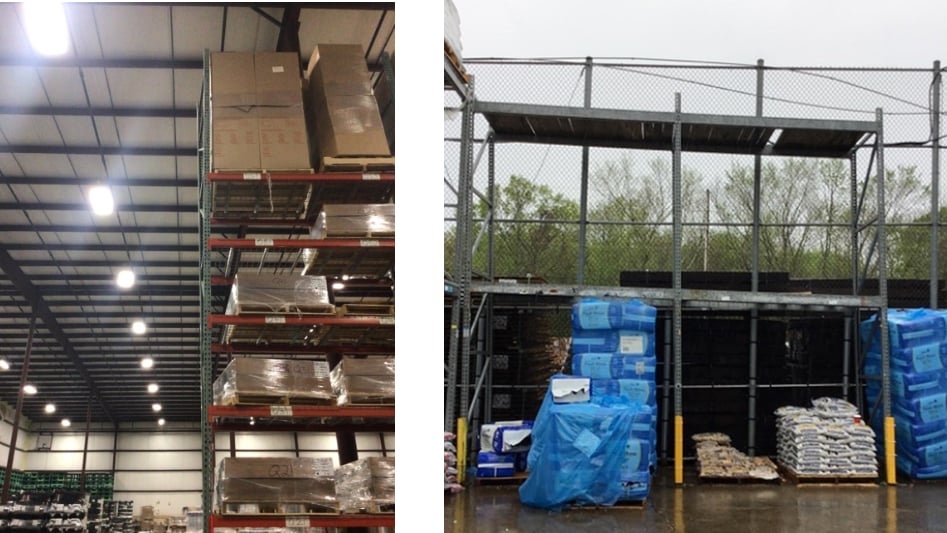
Figure 1: Leaning rack systems as a result of a tornado
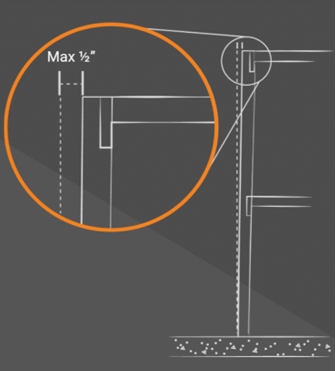
Figure 2: Diagram of a rack leaning
It is advisable to leave adequate space (flue space) around all pallets to allow air to pass through the system instead of pushing it onto it. An overstocked system with little to no gaps would act more like a wall which, intuitively, would be worse in such a situation. Another way to imagine it is that “wind will exert force primarily on the surface area of the pallet loads in the stored locations” [1], so the greater the amount of space they take, the more force that will be applied to the system from the passing wind. The figures below showcase the ideal space to keep around your pallet loads.

Figure 3: Diagram of a vertical flue space

Figure 4: Diagram of a horizontal flue space
These pushing forces are of more significant concern with outdoor systems where the racking is the primary wind-resisting structural system as opposed to building walls [1]. By extension of that reasoning, a good recommendation would be to add windbreaks or walls to protect outdoor systems [2].
With high winds circulating around stored materials, there is also the possibility of some of it being blown away. This, and any loose debris from the surrounding area, can impact racking as it flies across a warehouse. It can lead to damage at higher elevations than typically expected. Securing loose material before a storm by using pallet covers or wrapping stock on pallets may help keep it from flying out in such situations.
If there is enough warning of such a disaster, dangerous chemicals can be unloaded and moved to safer locations to avoid potential spills.
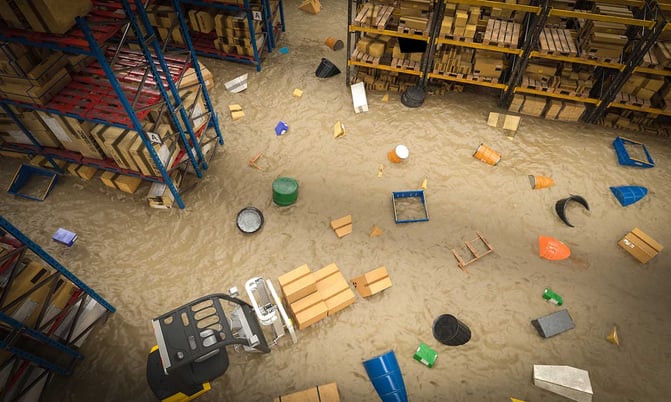
2. Tsunamis and Floods
Getting products off the ground is essential to prevent goods and materials from being ruined in flood. Having racking present is a valuable preventative measure as it raises most materials stored off the ground. A common exception to this would be heavier pallets which are often placed directly onto the floor. In rare cases where your region is prone to flooding, remain attentive and relocate these pallets when an early flood warning is announced so they don’t get wet.
In the case of tsunamis, rushing waters may also drag debris along, which could impact racking. The force of the moving water may also impart leaning and swaying, as was discussed with high wind situations.
3. Earthquakes
Earthquakes are dangerous for racking as they cause vibrations in the ground upon which the racking rests. As a system shakes, stored material can come loose, and there is also the potential for a racking collapse. The best way to mitigate this risk is to use racking types tailored specifically for zones of high seismic activity. Always consult a racking engineer to select racking systems with appropriate specifications for your area.
Another primary concern regarding excessive shaking or swaying is clearance. During installation, ensure adequate clearance between the rack systems and the building structure or other building elements, such as piping. Without proper clearance, collisions could damage the racks and the surrounding building. Piping, such as for sprinklers, that often runs through the rack systems could also be damaged, potentially leading to ruptures and flooding. Minimum acceptable clearances, as defined in ANSI MH16.1, are outlined in Figures 5 to 8.




Figures 5-6-7-8: Diagrams of rack clearance
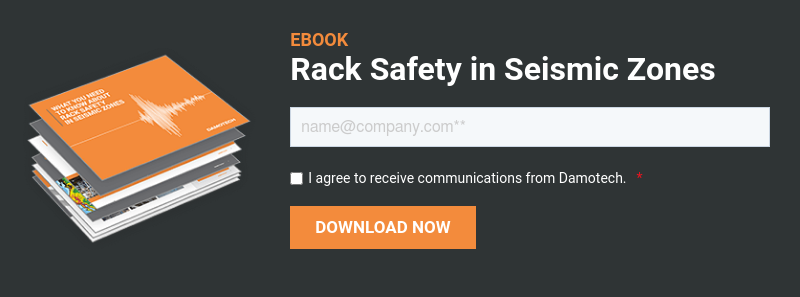
4. Freezing and Alternating Climates
Snow and ice buildup over the winter could eventually overload outdoor systems. The risk is, of course, much higher for racking already stocked to near its maximum load capacity. You can add sloped roofs atop exterior racks to mitigate the potential of such an occurrence. Alternatively, extend your warehouse’s roof like a veranda over the otherwise exposed systems.
Fluctuating temperatures can lead to condensation forming on the racking’s steel which can, in turn, lead to rust. For this reason, use racking with a galvanized coating when you can expect this sort of fluctuation (for example, in freezers or outdoors). 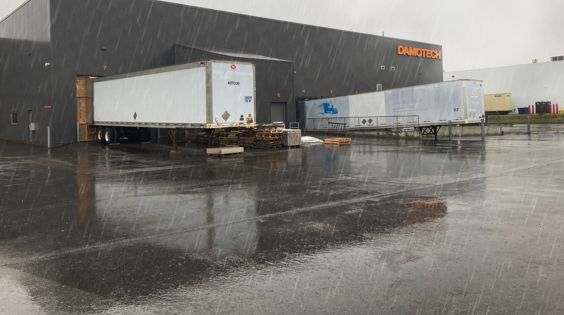
5. Rain and Humidity
Consistent rain leads to wet and humid environments, which are ideal for rust formation. Even after the rain has stopped, water accumulation remains a concern. It is recommended to have a sloped concrete slab so that rainwater can drain away and not create puddles around the bases of a rack. If this slope is applied, you should add shims at the bottom of the columns, so the rack stands on an even footing.
Rain can also accumulate on plastic wrapping or loose materials within a system. Decking that isn’t holed has the potential to hold onto water as well. Having clean, unencumbered systems that water can easily flow through is a good way of avoiding a buildup of corrosion damage.
It is advisable to monitor your racks to ensure that corrosion is manageable. As discussed in the previous section, this is another situation where you should use galvanized components. For more information on prioritizing rust issues, refer to our blog How Much Rust is Too Much.
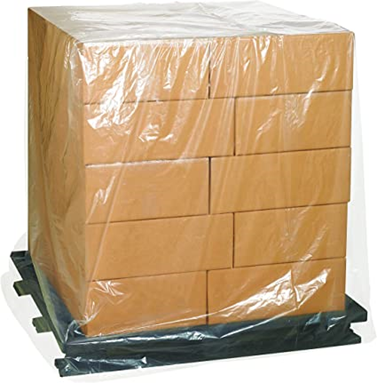
Image source: Amazon [4]
You can prevent water damage on products stored outdoors by using pallet covers to keep the rain out. Properly seal any stored chemicals, as rain can seep into poorly closed containers or torn bags and draw the chemicals out. For more information on how such a situation can be detrimental to your racking, please read our blog on racking issues that aren’t caused by forklifts.
Having high humidity around wooden pallets or having them consistently wet is an issue, as the wood can absorb moisture and be degraded by it [2]. A pallet weakened by mold or rot is a hazard as it may break. If you cover or wrap your pallets, remove the wrapping once the storm has passed, as it will hold moisture in. Ensuring pallets have adequate air ventilation around them is a good way of avoiding this issue.
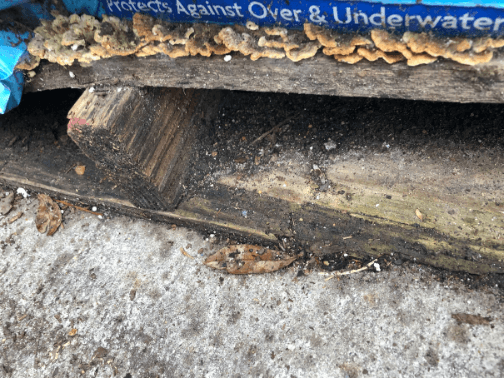
Recommendations for protecting your pallet racking systems from weather damage
In the case of natural disasters, always follow the recommendations made by local authorities. Stay clear of racking, as there is the possibility of collapse or loose material flying out or falling. Once the area is deemed safe, conduct a thorough professional inspection to assess the state of your racking and ensure it is still serviceable.
As for issues brought about by weather, you should use components with appropriate surface finishes for the intended environment. Keep pallets dry and protect them from rain or snow in outdoor environments. Overall, it is critical to utilize racks with the appropriate environmental specifications. Always consult local building codes and ensure your systems adhere to them.
If your warehouse has been affected by a natural disaster or accumulated weather damage over time and you want your racking assessed, please reach out to our engineering services. We will be happy to evaluate your systems.
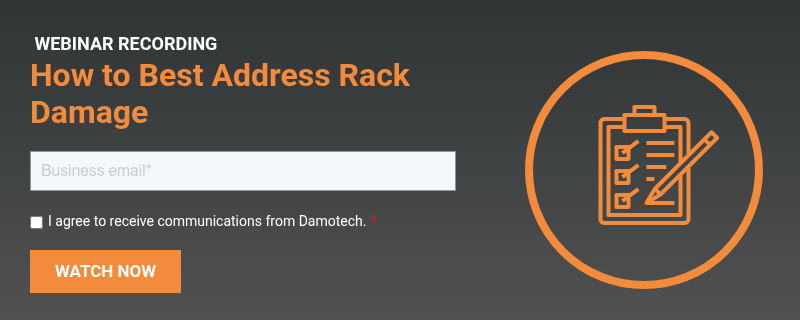
References
[1] Rack Manufacturer’s Institute. (2021). Design, Testing, and Utilization of Industrial Steel Storage Racks ANSI MH16.1-2021. Charlotte, NC: Rack Manufacturer’s Institute, an Industry Group of MHI.
[2] Cisco-Eagle. (2021, November 4). Pallet Racks and Outdoor Storage. Retrieved from www.cisco-eagle.com: https://www.cisco-eagle.com/blog/2021/11/04/pallet-racks-and-outdoor-storage/
[3] Plain Pallets. (2020, November 4). How Durable are Wooden Pallets. Retrieved from plainpallets.com.au: https://plainpallets.com.au/resource-centre/how-durable-are-wooden-pallets
[4] Amazon. (2022, September 22). PC504 Pallet Covers, 48-Inch X 46-Inch X 72-Inch, 1 Mil, Clear (Pack of 100). Retrieved from amazon.ca: https://www.amazon.ca/Aviditi-Pallet-48-Inch-46-Inch-72-Inch/dp/B00KG22O3I/ref=sr_1_3?crid=XYA6CA3DHSRQ&keywords=pallet%2Bcovers&qid=1663873577&sprefix=pallet%2Bcovers%2Caps%2C137&sr=8-3&th=1










